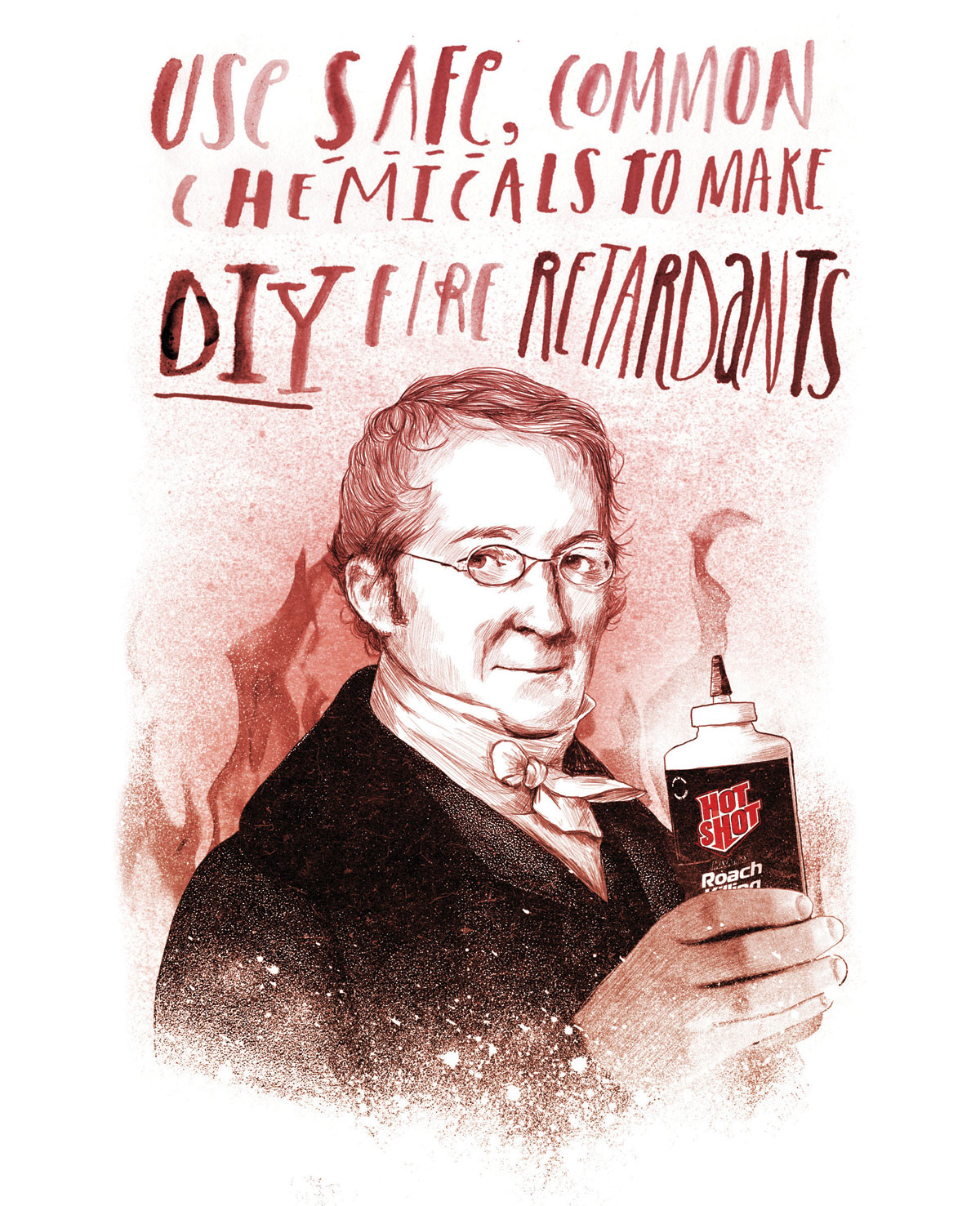
Don’t have this issue? Get it in the Maker Shed.
Before homes were electrified, people lived in constant danger of clothing and surroundings catching on fire from the oil lamps (see this column in Make: Volume 22) and cooking fires used in daily life. As the study of chemistry became more rigorous, scientists began to think about how to protect people from this hazard. The person who first delved systematically into the problem was Joseph Louis Gay-Lussac, a 19th-century French polymath.
Gay-Lussac was a giant in the history of chemistry. Born during the turbulence of the French Revolution, the youthful Gay-Lussac moved to Paris to study with the eminent scientist Claude Berthollet. Berthollet was a close friend of the late Antoine Lavoisier, who had written the seminal book on chemistry. Gay-Lussac rose quickly to become a professor of physics at the Sorbonne, and while he is best remembered for investigating the properties of gases, his discoveries in inorganic chemistry make him the father of modern fireproofing as well.
In his Paris laboratory, Guy-Lussac documented a host of experiments that pioneered the art and science of making a combustible world a bit safer. The key to his success was his work with one particular substance: boron.
If sulfur, often called brimstone, is the element most closely associated with starting fires, then boron is the element most associated with stopping them. Boron is a good fire retardant because it chemically transforms the materials it treats, notably paper and fabric, inhibiting the spread of flame and promoting the formation of a protective layer of char that acts as a fire barrier.
Boron compounds have been widely used since antiquity, but pure boron itself was not isolated until 1808. At that time, Gay-Lussac and rival Humphry Davy, one of England’s leading scientists (whom we met in this column in Make: Volume 20) were locked in a heated competition to isolate boron and thus lay claim to being its discoverer.
By 1808, Davy had discovered and named five elements — barium, calcium, strontium, sodium, and potassium — and felt confident he was close to isolating his sixth: the elusive boron. Word reached Gay-Lussac that Davy thought he was close. (In fact, many modern scholars believe Davy indeed isolated boron but was unable to prove it.)
So, across the English Channel, Gay-Lussac redoubled his efforts. Abandoning caution, he adopted a dangerous laboratory technique involving highly reactive pure potassium metal, and by taking this risk, soon isolated a substance he called “bore.” Gay-Lussac was able to verify to the satisfaction of his peers that what he found was indeed a new element.
Fireproofing Paper, Cloth, and Wood
In 1821, when Guy-Lussac was experimenting with methods to make materials resistant to fire, he saturated fabrics with boron salts and found that boron compounds could indeed prevent cloth, paper, and other cellulose-based materials from burning. His success in finding a fireproofing chemical that wouldn’t affect the color of cloth — or turn it poisonous — was a breakthrough.
Make a Fireproof Walking Stick/Campfire Poker
You can use Gay-Lussac’s discoveries to make a combination fire-resistant hiking stick and campfire poker — a handy, multipurpose item that’s ideal for overnight hikes into the wilderness. You’ll use a slight variation of Guy-Lussac’s original methods, but the principles are the same. As always, undertake this project at your own risk.




















